Total Cost of Ownership (TCO) in cloud computing refers to the complete cost of owning and operating a cloud environment over a specified period. Unlike direct costs, such as subscription fees or pay-as-you-go pricing, TCO accounts for direct and indirect expenses, including infrastructure, management, and operational overhead.
This holistic approach helps organizations evaluate cloud investments accurately, enabling better budget forecasting and informed decision-making when comparing on-premises infrastructure, hybrid setups, and multi-cloud strategies.
Main Components of TCO
A comprehensive TCO analysis for cloud computing includes several cost categories:
- Infrastructure Costs
These include the direct expenses of computing, storage, and networking resources. Infrastructure costs can vary based on the pricing model—on-demand, reserved, or spot instances—and additional features like high availability and redundancy.
- Migration Costs
Transitioning from on-premises systems to the cloud or between cloud providers involves significant expenses, such as:
- Data transfer fees: Costs associated with moving large datasets to the cloud.
- Downtime: Potential revenue loss during the migration period.
- Consultation and tools: Investments in migration services or third-party tools.
- Operational Costs
Once the cloud environment is running, ongoing expenses include:
- Software licensing: Costs for third-party software or SaaS applications integrated with the cloud infrastructure.
- Scaling and elasticity: Charges for scaling resources up or down based on usage patterns.
- Support and monitoring tools: Subscription fees for tools that ensure performance, security, and compliance.
- Management and Staffing Costs
Organizations often underestimate the human resource expenses tied to cloud adoption, such as:
- Training IT staff to manage cloud environments.
- Employing DevOps or cloud engineers to handle day-to-day operations.
- Allocating resources for compliance audits and cloud governance.
- Hidden Costs
TCO also uncovers often-overlooked costs, such as:
- Data egress fees: Charges for transferring data out of the cloud.
- Redundant services: Unused or underutilized resources that continue to incur charges.
- Latency issues: Indirect costs related to performance degradation affecting end-user experience.
Why TCO Matters in Cloud Computing
- Informed Decision-Making
TCO enables organizations to compare cloud solutions with on-premises or hybrid options, helping identify the most cost-effective model for their unique needs.
- Budget Forecasting
By including direct and indirect costs, TCO provides a realistic picture of cloud expenditures over time, minimizing unexpected expenses.
- Risk Management
Understanding TCO helps businesses anticipate potential financial risks, such as overcommitting to reserved capacity or underestimating migration challenges.
- Strategic Planning
With TCO insights, companies can strategically allocate resources, prioritize investments, and negotiate better contracts with cloud providers.
Challenges in Calculating TCO
Although TCO is invaluable, calculating it accurately is not without difficulties:
- Complexity in Multi-Cloud Environments
Operating across multiple cloud providers introduces fragmented billing and varying cost structures, complicating the aggregation of expenses.
- Dynamic Pricing Models
Cloud providers frequently update their pricing structures, requiring constant vigilance to ensure TCO calculations reflect current rates.
- Predicting Indirect Costs
Estimating costs like downtime during migration, staff training, or long-term maintenance can be subjective and variable.
- Hidden Costs
Many expenses, such as egress charges or the cost of maintaining legacy systems during migration, are often overlooked during initial calculations.
Organizations should adopt cloud cost management tools to overcome these challenges and involve cross-functional teams in the TCO evaluation process.
Strategies to Optimize TCO in Cloud Computing
Reducing TCO doesn’t mean cutting corners—finding the right balance between cost and performance. Here are actionable strategies:
- Right-Sizing Resources
Analyze resource usage regularly to prevent overpaying for oversized instances, unused storage, or redundant services.
- Using Cost-Effective Pricing Models
Take advantage of savings plans, reserved instances, or spot instances to lower costs for predictable workloads. For dynamic workloads, explore on-demand or burstable options.
- Automating Resource Management
Use automation tools to schedule resource scaling during off-peak hours, ensuring you only pay for what you use.
- Optimizing Data Transfers
Minimize data egress fees by strategically positioning data geographically closer to users or using caching services like CDNs.
- Investing in Training
Train teams to use cloud services and tools effectively, reducing the risk of misconfigurations that lead to unnecessary expenses.
- Monitoring and Reporting
Implement cost management tools to monitor TCO continuously, identify cost spikes, and allocate resources more efficiently. Tools like AWS Cost Explorer or Azure Cost Management can provide valuable insights.
TCO in Cloud vs. On-Premises: A Quick Comparison
This comparison highlights the importance of evaluating TCO when deciding between cloud and traditional infrastructures.
| Aspect | Cloud | On-Premises |
| CapEx vs. OpEx | Operational expenses with flexible scaling | Significant upfront capital investment |
| Scalability | High scalability, pay-as-you-go pricing | Limited scalability, fixed capacity |
| Maintenance | Handled by the provider | Requires dedicated in-house teams |
| Upfront Costs | Minimal | High |
| TCO Complexity | Higher for multi-cloud environments | Lower but includes hardware lifecycle costs |
Conclusion
Total Cost of Ownership is an important metric for organizations aiming to maximize the value of their cloud investments. TCO provides a clear understanding of the financial implications of cloud adoption, enabling businesses to plan strategically and avoid unforeseen expenses by accounting for all direct and indirect costs.

